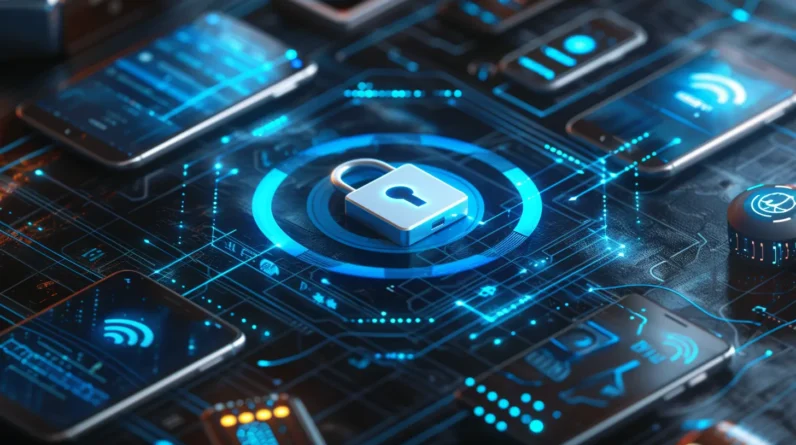
In today’s world, we lock our doors, secure our cars, and protect our personal information, yet often overlook the security of our smart appliances. As we integrate these devices into our daily lives, it’s essential we also safeguard them from cyber threats.
By exploring simple yet effective strategies, we’ll show you how to shield your smart home from unwanted digital intrusions. From securing your network to practicing smart password habits, the steps we’re about to discuss could be the difference between safety and vulnerability.
But there’s one aspect many overlook, which we’ll reveal as we move forward, ensuring your smart appliances remain under your control, not someone else’s.
Understanding the Risks
In evaluating the vulnerabilities of smart appliances, it’s important to recognize that these devices, often integral to our daily lives, can become prime targets for cyber attackers seeking unauthorized access to personal data and home networks. These sophisticated pieces of technology are designed to enhance convenience but inadvertently open gateways for exploitation due to inherent security weaknesses.
We must understand the nature of these risks, which range from firmware exploitation to weak authentication mechanisms. Cyber attackers often exploit outdated software, easily guessable passwords, and unsecured interfaces to gain control. This understanding is essential for developing robust security protocols and ensuring that our reliance on these devices doesn’t compromise our digital safety.
Mastery of this knowledge is the first step toward safeguarding our smart appliances against potential cyber threats effectively.
Secure Your Network
Having understood the vulnerabilities that smart appliances face, we must now prioritize securing our home networks to block potential cyber threats. This involves implementing robust measures that not only safeguard our devices but also guarantee the integrity of our digital ecosystem.
To achieve a fortified network, consider the following actions:
1. Change the Default Router Password: The factory-set passwords are often easily guessable. Opting for a strong, unique password is crucial.
2. Enable Network Encryption: Utilize WPA3 encryption on your Wi-Fi network to protect data transmission from eavesdropping.
3. Segment Your Network: Create a separate Wi-Fi network for your smart appliances. This limits the potential spread of cyber attacks across devices.
Regular Updates Matter
We must consistently update our smart appliances and security systems to guard against evolving cyber threats. Manufacturers frequently release software updates to patch vulnerabilities and enhance security features. These updates are critical in fortifying our devices against the latest malware and hacking techniques. Ignoring them leaves gateways open for cybercriminals to exploit.
To make sure protection, we should enable automatic updates wherever possible, making the process seamless and consistent. For appliances and systems without this feature, setting a regular schedule to check for and apply updates manually is necessary. Moreover, verifying the source of these updates is paramount to avoid installing malicious software disguised as legitimate updates. By prioritizing regular updates, we actively participate in safeguarding our digital ecosystem from the relentless advancement of cyber threats.
Smart Password Practices
To effectively shield our smart appliances from cyber attacks, adopting smart password practices is essential. Here’s how we secure our devices:
1. Use Complex Passwords: Each device should have a unique password, combining letters, numbers, and special characters. This complexity thwarts brute-force attacks.
2. Implement Two-Factor Authentication (2FA): Whenever possible, we activate 2FA. This adds an extra layer of security, requiring not just something we comprehend (password) but something we possess (a code sent to our phone) to access our devices.
3. Regularly Change Passwords: We schedule regular updates to our passwords, avoiding the risk of long-term exposure if a password is ever compromised. This habit is critical for maintaining the integrity of our digital security perimeter.
Monitor and Control Access
Monitoring and controlling access to our smart appliances is a critical step in safeguarding them from unauthorized use and potential cyber threats.
We must employ advanced authentication mechanisms, such as biometric verification or multi-factor authentication, to make sure that only authorized users can interact with our devices. It’s imperative to regularly review and update access privileges, removing outdated users to minimize vulnerabilities.
Moreover, we should implement network segmentation, isolating our smart appliances from non-essential devices and networks to prevent lateral movements in case of a breach.
Conclusion
In wrapping up, we’ve armed you with the essentials to fortify your smart appliances against cyber threats. Keeping our digital doors locked tight is essential, and it’s not rocket science. By securing our network, staying on top of updates, crafting smart passwords, and monitoring access, we’re not just playing it safe; we’re setting a cybersecurity standard.
Remember, in the digital world, an ounce of prevention is worth a pound of cure. Let’s stay vigilant and protect our digital homes.







